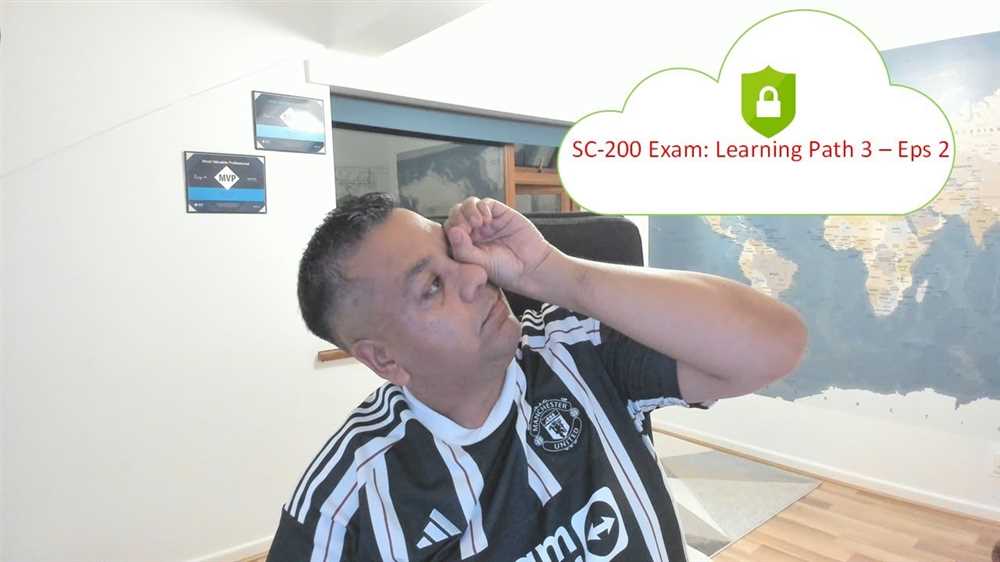
Preparing for a final exam in criminology can be a daunting task, especially if you’re not sure where to start. This study guide is designed to help you navigate the key concepts and theories that are likely to be covered in your final exam. By reviewing and understanding these topics, you’ll be better prepared to answer questions and demonstrate your knowledge of criminology.
One important area to focus on is the different types of crime. You should familiarize yourself with the definitions and characteristics of crimes such as violent crime, property crime, white-collar crime, and organized crime. Understanding these types of crime will enable you to analyze and discuss their causes, consequences, and prevention strategies.
Another key topic to study is the various criminological theories. These theories offer different perspectives on why individuals commit crimes and how society can respond to criminal behavior. Some major theories to review include the classical theory, positivist theory, social learning theory, and strain theory. Exploring these theories will allow you to critically analyze criminal behavior and evaluate the effectiveness of different approaches to crime control and prevention.
Lastly, it’s important to familiarize yourself with the criminal justice system and its components. This includes understanding the stages of the criminal justice process, such as arrest, trial, and sentencing, as well as the roles of different actors within the system, such as police officers, judges, and correctional officers. By grasping these key concepts, you’ll be able to discuss how the criminal justice system functions and identify potential areas for improvement.
By utilizing this study guide and dedicating time to review these key concepts and theories, you’ll be well-equipped to tackle your criminology final exam with confidence. Remember to take breaks, ask for help if needed, and stay organized in your studying. Good luck!
Criminology Final Exam Study Guide

Welcome to the Criminology Final Exam Study Guide! This guide aims to help you prepare for your upcoming exam by providing a comprehensive overview of the key concepts and theories in the field of criminology. Whether you’re a student studying criminology or a legal professional looking to refresh your knowledge, this guide is designed to provide you with the information you need to succeed.
Key Concepts:
- Crime: Understand the definition of crime and different types of crime, including violent, property, and white-collar crime.
- Social Control: Learn about the various forms of social control, such as formal and informal mechanisms, and their impact on reducing and preventing crime.
- Deviance: Explore the concept of deviance and how it is related to criminal behavior. Understand the role of societal norms and how they shape individuals’ behavior.
- Criminal Justice System: Familiarize yourself with the functioning of the criminal justice system, including law enforcement, courts, and corrections.
- Crime Prevention: Examine different crime prevention strategies, including situational crime prevention, community-based approaches, and rehabilitation programs.
Key Theories:
- Rational Choice Theory: Explore the rational choice theory, which suggests that individuals weigh the potential benefits and costs of committing a crime before making a decision.
- Social Learning Theory: Understand the social learning theory, which posits that individuals learn criminal behavior through their interactions with others and through observation.
- Strain Theory: Learn about the strain theory, which argues that individuals engage in criminal behavior when they are unable to achieve their social goals through legitimate means.
- Labeling Theory: Examine the labeling theory, which contends that individuals may adopt a criminal identity and engage in further criminal behavior as a result of being labeled as deviant by society.
By reviewing and understanding these key concepts and theories, you will be well-equipped to tackle the Criminology Final Exam. Best of luck!
Theoretical Foundations of Criminology
Criminology is the study of crime and criminal behavior. It seeks to understand the causes, consequences, and prevention of criminal activities. To achieve this understanding, criminologists rely on various theoretical foundations that help explain why individuals engage in crime and how society can address this issue.
Social disorganization theory is one of the key theoretical frameworks in criminology. It suggests that crime rates are higher in neighborhoods with weak social ties and low levels of social control. According to this theory, social disorganization leads to an absence of shared values, social cohesion, and effective informal social control mechanisms, which in turn contribute to a higher likelihood of criminal behavior.
Strain theory focuses on the relationship between social structure and crime. It suggests that individuals resort to criminal activities when they are unable to achieve socially valued goals through legitimate means. The strain experienced from the inability to achieve desired goals can lead to frustration, anger, and eventually criminal behavior. This theory highlights the importance of addressing social inequalities and providing equal opportunities for all members of society.
- Routine activities theory proposes that crime occurs when three elements converge: motivated offenders, suitable targets, and the absence of capable guardians. According to this theory, the presence of these three factors increases the likelihood of criminal activity. This perspective emphasizes the importance of reducing criminal opportunities and increasing guardianship to prevent crime.
- Labeling theory focuses on the social reaction to deviant behavior. It suggests that individuals become criminals because they are labeled as such by society. Once labeled, individuals may internalize this identity and engage in further criminal behavior. This theory highlights the importance of addressing the stigmatization of individuals who have been labeled as criminals and providing opportunities for rehabilitation and reintegration into society.
Biological theories of criminology explore the role of genetics, neurological factors, and other biological characteristics in criminal behavior. These theories suggest that certain biological factors may predispose individuals to engage in criminal activities. While biological factors can contribute to criminal behavior, they do not determine it entirely, and the interaction between biological and environmental factors is crucial to understanding crime.
In conclusion, criminology relies on various theoretical foundations to explain criminal behavior. These theories help criminologists understand the causes and consequences of crime, as well as develop strategies for crime prevention and intervention.
Biological and Psychological Theories
Biological theories of criminology focus on the idea that there are genetic, physiological, and neurological factors that contribute to criminal behavior. These theories suggest that individuals may be predisposed to engage in criminal activities due to their biological makeup. One example of a biological theory is the theory of genetic inheritance, which proposes that criminal behavior can be passed down from generation to generation through genetics. Another example is the theory of brain functioning, which suggests that abnormalities in brain structure or function may lead to an increased likelihood of criminal behavior.
Psychological theories of criminology, on the other hand, examine how individual and environmental factors can contribute to criminal behavior. These theories focus on the individual’s personality traits, cognitive processes, and social learning experiences. One example of a psychological theory is the theory of differential association, which suggests that individuals learn criminal behavior through their interactions with others who engage in criminal activities. Another example is the theory of self-control, which proposes that individuals with low self-control are more likely to engage in impulsive and criminal behavior.
Key points:
- Biological theories focus on genetic, physiological, and neurological factors.
- Psychological theories examine individual and environmental factors.
- Biological theories propose that individuals may be predisposed to criminal behavior due to their biology.
- Psychological theories suggest that individual traits and social learning experiences contribute to criminal behavior.
Sociological Theories
In criminology, sociological theories aim to explain why individuals engage in criminal behavior and how societal factors contribute to crime. These theories emphasize the role of social structures, institutions, and relationships in shaping an individual’s behavior. Several sociological theories have emerged over time, each offering a unique perspective on the causes of crime and possible solutions.
One prominent sociological theory is strain theory, which suggests that individuals engage in criminal behavior when they experience strain or stress due to a lack of access to societal goals and the means to achieve them. According to strain theory, crime is a result of the gap between the goals society promotes and the means available to individuals to achieve those goals. This theory highlights the importance of social and economic inequality in driving criminal behavior.
Social disorganization theory
- Social disorganization theory posits that crime is more likely to occur in neighborhoods characterized by weak social ties, a lack of informal social control, and high levels of poverty and unemployment.
- According to this theory, communities with high levels of social disorganization are unable to effectively regulate and control deviant behavior, leading to higher crime rates.
- Factors such as residential stability, ethnic heterogeneity, and concentrated disadvantage have been found to contribute to social disorganization and increase the likelihood of crime.
Social learning theory
Social learning theory suggests that individuals learn criminal behavior through observation, imitation, and reinforcement. According to this theory, people are more likely to engage in criminal activities if they perceive that the benefits outweigh the costs and if they have been exposed to deviant models or environments. Social learning theory emphasizes the role of socialization and peer influence in shaping criminal behavior.
Labeling theory

Labeling theory argues that individuals become criminals because they are labeled as such by society. This theory suggests that the labeling process, in which an individual is stigmatized as a criminal, can lead to a self-fulfilling prophecy, whereby the labeled individual internalizes and adopts the criminal identity. Labeling theory highlights the importance of societal reactions to deviance and the potential negative consequences of labeling individuals as criminals.
Types of Crimes and Criminal Behavior

Criminology explores various types of crimes and criminal behavior, providing insights into the motivations and actions of individuals who engage in illegal activities. Understanding these different categories of crime is crucial for developing effective strategies to prevent and combat criminal behavior.
Violent Crimes: Violent crimes involve the use of force or threat of force against another person, resulting in physical harm or death. Examples of violent crimes include assault, murder, robbery, and rape. These crimes are typically committed by individuals with a propensity for aggression and a lack of empathy for their victims.
Property Crimes: Property crimes involve the unlawful acquisition, destruction, or damage to someone else’s property. This category includes burglary, larceny, arson, and vandalism. Property crimes are often motivated by financial gain, as offenders seek to steal or damage valuable possessions.
White-collar Crimes: White-collar crimes refer to non-violent offenses committed by individuals in powerful or respected positions within the business or professional world. These crimes usually involve fraud, embezzlement, bribery, or insider trading. Unlike other forms of crime, white-collar crimes are often driven by financial greed and a desire for personal gain.
Organized Crimes: Organized crimes involve groups or syndicates that engage in illegal activities for profit. These criminal organizations operate in a structured manner, often specializing in activities such as drug trafficking, human trafficking, money laundering, and extortion. Organized crimes are typically characterized by hierarchy, secrecy, and a strong network of connections.
Cybercrimes: With the rise of technology, cybercrimes have become a prevalent form of criminal activity. Cybercriminals use computers or the internet to perpetrate crimes such as identity theft, hacking, and online fraud. These crimes pose unique challenges to law enforcement due to their anonymous nature and the global reach of the internet.
Serial Crimes: Serial crimes involve repeated offenses committed by the same individual against multiple victims. These crimes often have a psychological component, as serial offenders derive satisfaction or pleasure from their actions. Examples of serial crimes include serial killings, serial rape, and serial arson.
Drug-related Crimes: Drug-related crimes encompass offenses related to the production, distribution, sale, or possession of illegal drugs. These crimes include drug trafficking, drug manufacturing, and drug possession. Drug-related crimes are fueled by the lucrative nature of the drug trade and the widespread demand for illegal substances.
Understanding the various types of crimes and the motivations behind them allows criminologists and law enforcement agencies to develop strategies for prevention, intervention, and rehabilitation. It is essential to study criminal behavior to identify patterns, potential risk factors, and effective methods to deter individuals from engaging in illegal activities.